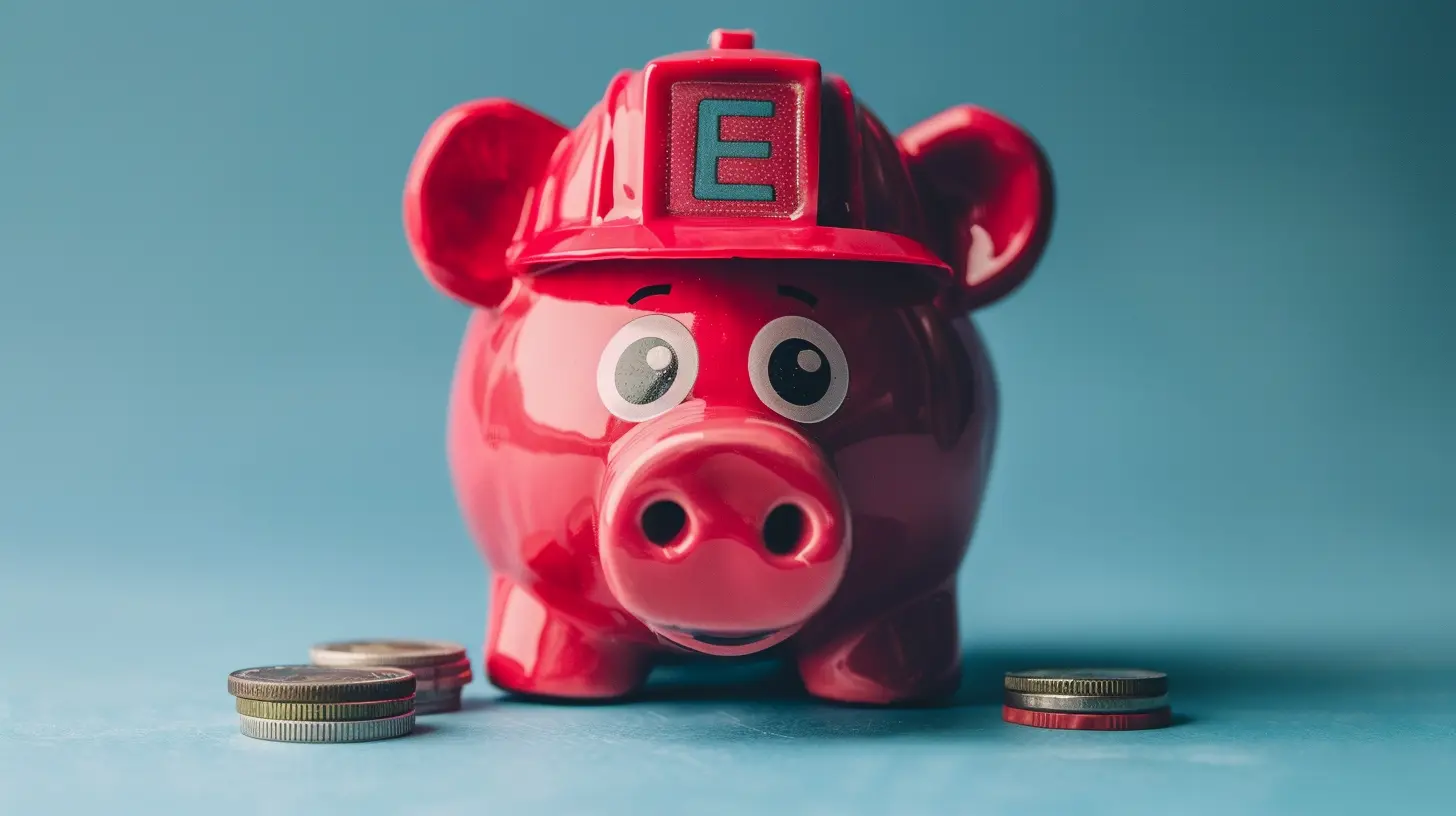Emergency Fund Funding: How Side Hustles Can Help
31 July 2025
Imagine this: your car breaks down unexpectedly, or you get a surprise medical bill you weren't ready for. Stress kicks in, right? That’s where an emergency fund swoops in like a financial superhero. But what if you don't have one? Or worse, you’ve drained yours? Don’t panic — that’s where side hustles come into play.
Side hustles aren’t just trendy anymore, they’re becoming a lifeline for people trying to stay afloat financially. Whether you're building your emergency fund from scratch or trying to refill it, a side gig can seriously change the game. Let’s dive in and unpack how side hustles can help you fund your emergency stash without turning your budget upside down.
What Exactly Is an Emergency Fund?
Before we talk about side hustles, let’s make sure we’re all on the same page about emergency funds.An emergency fund is a cash reserve specifically set aside for those “uh-oh” moments — job loss, car repairs, medical expenses, home fixes, or anything else that hits your wallet suddenly and hard. Experts often recommend saving 3–6 months' worth of living expenses. Sounds intimidating? Yeah, it kinda is — but totally doable.
Think of your emergency fund as financial armor. It's not there for vacations or new sneakers. It's your backup plan. Your "I got this" safety net.
Why You Need That Fund So Badly
Let’s be real: life is unpredictable. No matter how careful you are, s—stuff happens. Without an emergency fund, you’re one unexpected expense away from dipping into your rent money or worse — going into debt.Here’s the tricky part: setting up that emergency fund takes time. And if you’re already living paycheck to paycheck, saving feels like trying to squeeze water from a rock. That’s when you pull out your secret weapon: the side hustle.
The Side Hustle Revolution
Okay, so what actually is a side hustle? It’s any job or gig you do on the side to earn extra income beyond your main job. Simple as that. It could be freelancing, driving for Uber, selling stuff online, tutoring, pet sitting — you name it.The beauty of side hustles is flexibility. You get to choose when, how, and how much. It's like building your own mini income stream without quitting your 9-to-5.
According to recent studies, nearly 45% of Americans have a side hustle. That’s not just a trend, that’s a financial survival tactic. And many use their side gig income specifically to build savings — including emergency funds.
How Side Hustles Can Supercharge Your Emergency Fund
Let’s break it down — how can a side hustle turn into your emergency fund’s best friend?1. Extra Cash Flow = Faster Savings
This one's obvious, but worth saying out loud. A side hustle adds extra income on top of your regular job. That means more money to stash away without sacrificing your current standard of living.Let’s say you make $200 a week delivering food part-time. That’s $800 a month. In just three months, boom — you have $2,400 stashed. That chunk could cover a broken laptop, a minor car repair, or a few weeks of bills.
2. Keeps Emergency Funds Separate
One of the sneakiest problems with saving is accidentally spending your savings. A side hustle solves that by becoming a dedicated income stream just for your emergency fund.Set a rule: “All side hustle income goes directly into my emergency stash.” It keeps your finances organized and your goals laser-focused.
3. Reduces Reliance on Credit Cards
Without an emergency fund, many people turn to credit cards in a crunch. That’s a trap. High interest rates can balloon a small problem into a long-term debt disaster. By building your emergency fund through a side hustle, you're creating a buffer that keeps you from reaching for that plastic fix.4. Builds New Skills and Confidence
Unexpected bonus alert! Side hustles often teach you new skills — whether it's writing, photography, sales, or just better time management. This not only boosts your wallet but your resume too. And the confidence? Oh yeah, that’s priceless.Best Side Hustles to Fund Your Emergency Stash
Not all side gigs are created equal. Some are easier to get into, some pay better, and some fit different lifestyles. Let’s look at a few top choices and how they can accelerate your emergency fund goals.Freelance Writing or Graphic Design
- 💡 Use your existing skills online- 🕓 Work on your own schedule
- 💰 High earning potential
Sites like Upwork, Fiverr, or Freelancer.com let you find clients easily. If you’ve got a knack for words or design, this can be a consistent and lucrative hustle.
Delivery and Driving Gigs
- 🚘 Uber, Lyft, DoorDash, Instacart — take your pick- 📍 Great for city dwellers
- ✨ Instant payouts with some apps
Great if you have a car and some spare hours. These gigs let you earn fast, especially during weekends or evenings.
Selling Handmade or Vintage Items
- 🎨 Got crafting skills? Etsy’s calling your name- 🔄 Flip items from thrift stores on eBay or Depop
- 📦 Side hustle meets passion project
This one’s fun and can turn into a serious business. Plus, it clears out your garage. Win-win.
Online Tutoring or Teaching
- 📚 Good at English, math, or science?- 💻 Platforms like VIPKid, Wyzant, or Teachable make it easy to start
- 🧠 Teaching can feel genuinely rewarding
If you’ve got teaching chops, turn your knowledge into income while helping others learn.
Rent Out Stuff
- 🏠 Got a spare room? Airbnb it.- 🚗 Not using your car much? Turo.
- 🛠 Tools or gear collecting dust? Rent them locally.
You don’t even need to “do” anything — just let your stuff make you money on the side.
Making that Side Hustle Pay Off
So you've chosen your hustle. Now what? Here’s how to make sure your new gig actually grows your emergency fund:Set a Goal
Decide how much you want in your emergency fund. $1,000 as a starter? $5,000 for 3 months' rent and bills? Having a target makes the hustle feel purposeful.Automate your Savings
Use a separate savings account and set up auto-transfers. Some apps like Qapital or Chime round up purchases and save the change — effortless additions to the fund.Track Your Progress
Visual motivation works wonders. Use a chart, app, or even a sticky note. Watching your fund grow is super satisfying.Stay Consistent
The magic of a side hustle is in the grind. Even if you’re only doing it a few hours a week, that money adds up fast when you stick with it.Side Hustling Without the Burnout
Let’s keep it real — side hustles can be exhausting. Balancing a day job, life responsibilities, and a gig isn't exactly a cakewalk. Here’s how to avoid total burnout:- 🚦Start slow. Don't try to earn $1,000 in your first week.
- 🧘♀️ Prioritize rest. Hustling when you’re drained isn’t productive.
- ⏰ Set boundaries. Don't let your side gig take over your life.
- 😊 Make it enjoyable. Choose something you actually like doing.
The goal is to make extra money, not lose your sanity.
When to Dial It Back
Once your emergency fund hits your target — you don’t have to stop your side hustle, but you might want to re-purpose that income. Maybe it goes toward paying off debt, investing, or finally taking that vacation.Or maybe you keep going just in case. Life’s always throwing curveballs — who says you can’t have multiple safety nets?
Final Thoughts
Emergency funds are lifesavers. They’re your financial defense against the unpredictability of life. And while saving from your regular income is great, sometimes it’s just not enough — or fast enough.That’s where side hustles shine. They don’t just give you extra cash; they give you financial confidence. They empower you to take control, to prepare, to breathe a little easier when things don’t go as planned.
So, if you’re on the fence about starting a side hustle — here’s your sign. Your future self will thank you.
all images in this post were generated using AI tools
Category:
Emergency FundAuthor:

Knight Barrett
Discussion
rate this article
1 comments
Winter Kirkpatrick
Stop waiting for the perfect moment to build your emergency fund—start hustling now! Side gigs aren’t just extra cash; they’re your financial safety net. Embrace the grind, get creative, and watch your savings grow. Your future self will thank you!
August 11, 2025 at 2:30 AM

Knight Barrett
Absolutely! Starting a side hustle now can significantly boost your emergency fund and provide financial security. Don't wait—take action and secure your future!


